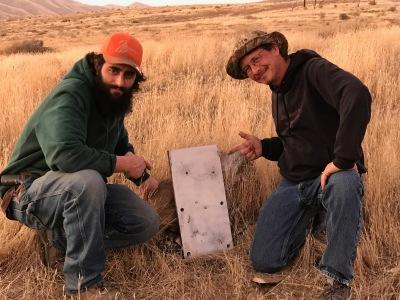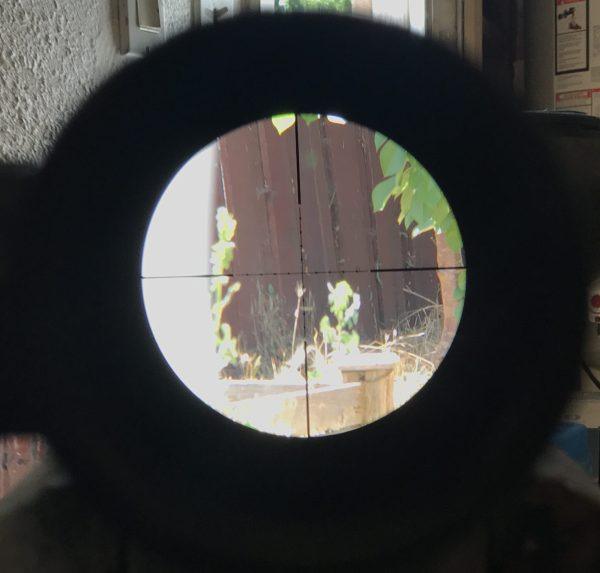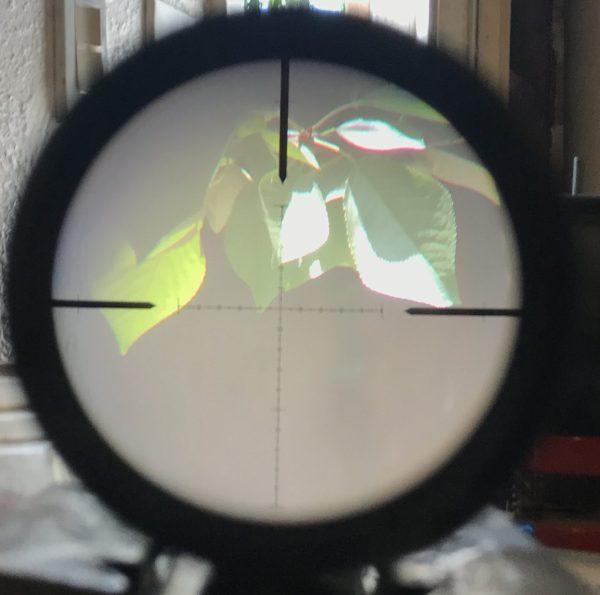BallisticsGuy
Well-Known Member
See https://www.longrangehunting.com/threads/6mm-creedmoor.221795 for more back story.
Cliff's Notes: Forum member Deahl bought this pile of junk Primary Arms 4-16x44 scope for his really quite decent long range rifle and I just couldn't allow that tragedy of mismatched parts to stand unchallenged. You see, I have a little hobby where I destroy garbage scopes in gloriously excessive and showy ways and make low budget short films about said destruction done in the style of historically famous and cinematically significant flicks. Here's an example of me and my crew destroying a UTG Bug Buster which I did with a wink and a nod to Eraserhead. Why Eraserhead? Seemed like the thing to do at the time.
More details:
So, I traded forum member Deahl a SWFA 16x42 Super Sniper in Mil/Mil for his Primary Arms 4-16x44 SFP. He got himself a 6mm Creeedmoor Savage Tactical rifle which was a great idea and then he decided on a Primary Arms optic from their low end line which was and remains a terrible idea. I love destroying garbage optics in ostentatious ways. I know you guys don't like anything too ostentatious and you really don't like fire.
The SWFA 16x42 rushing on its way to Deahl spent the last ~5 years on one of my 7mm RM's that I used for >1500yrd shooting pretty well exclusively so I can vouch not only for the brand but also for this specific unit. I've done some good work with with this optic. Here's me and a buddy rejoicing in the 2 consecutive swats I made in a row on a 10" wide target from just a RCH under a mile (IIRC it was 1625yrds) with the rifle that used to wear the scope I've sent to Deahl.

So I'm going to use this thread to track the various tests that I do with this scope before it meets its final fate. I've already kind of decided on what theme to do for the video but I've got this nagging thought that a 2nd idea might be better so we'll see which one I do.
First look:
The first thing I did was compare the 2 side by side with the ol' mk.1 eyeball. The glass is on the PA reasonably clear and bright. That's good and the good more or less stops there. So I dial the PA up to 16x and point it at a palm tree about 100yrds away and it's like looking through a straw. I pull up my 16x42 SWFA and look at the same spot and it's a tight field of view (16x at rock throwing distance) but it's noticeably broader than the PA. I also compared to a Nikon P5 Prostaff 4-16x which seemed smaller yet. Ok, well let's look this up. The PA does in fact have a smaller FoV than the SWFA but bigger by a decent bit than the Nikon.
Field of View
FoV @ 100yrds @ 16x
Primary Arms 4-16x44 SFP ($159): 6.98ft
SWFA 16x42 Super Sniper ($299): 7.2ft
Nikon P5 4-16x42 ProStaff ($329): 6.2ft
Dat mask:
Comparing the images I note that the image quality among all 3 scopes is roughly the same at close ranges. Long ranges I have to wait a little bit for. The SWFA image goes right to the physical edge of the scope leaving no black ring. Then I look through a Nikon ProStaff 4-16x42SF and there's only a slight bit of black at the edges of the image. On the PA there is apparently a massive mask in use which creates an ocean of black between the image and the physical edge of the scope. It's seriously like 30% of the area that could have image in it only has black in it.
Coming up: Turrets (consistency, click values, cap attachment, look & feel, locking), long range optical performance, weight and illumination.
Cliff's Notes: Forum member Deahl bought this pile of junk Primary Arms 4-16x44 scope for his really quite decent long range rifle and I just couldn't allow that tragedy of mismatched parts to stand unchallenged. You see, I have a little hobby where I destroy garbage scopes in gloriously excessive and showy ways and make low budget short films about said destruction done in the style of historically famous and cinematically significant flicks. Here's an example of me and my crew destroying a UTG Bug Buster which I did with a wink and a nod to Eraserhead. Why Eraserhead? Seemed like the thing to do at the time.
More details:
So, I traded forum member Deahl a SWFA 16x42 Super Sniper in Mil/Mil for his Primary Arms 4-16x44 SFP. He got himself a 6mm Creeedmoor Savage Tactical rifle which was a great idea and then he decided on a Primary Arms optic from their low end line which was and remains a terrible idea. I love destroying garbage optics in ostentatious ways. I know you guys don't like anything too ostentatious and you really don't like fire.
The SWFA 16x42 rushing on its way to Deahl spent the last ~5 years on one of my 7mm RM's that I used for >1500yrd shooting pretty well exclusively so I can vouch not only for the brand but also for this specific unit. I've done some good work with with this optic. Here's me and a buddy rejoicing in the 2 consecutive swats I made in a row on a 10" wide target from just a RCH under a mile (IIRC it was 1625yrds) with the rifle that used to wear the scope I've sent to Deahl.

So I'm going to use this thread to track the various tests that I do with this scope before it meets its final fate. I've already kind of decided on what theme to do for the video but I've got this nagging thought that a 2nd idea might be better so we'll see which one I do.
First look:
The first thing I did was compare the 2 side by side with the ol' mk.1 eyeball. The glass is on the PA reasonably clear and bright. That's good and the good more or less stops there. So I dial the PA up to 16x and point it at a palm tree about 100yrds away and it's like looking through a straw. I pull up my 16x42 SWFA and look at the same spot and it's a tight field of view (16x at rock throwing distance) but it's noticeably broader than the PA. I also compared to a Nikon P5 Prostaff 4-16x which seemed smaller yet. Ok, well let's look this up. The PA does in fact have a smaller FoV than the SWFA but bigger by a decent bit than the Nikon.
Field of View
FoV @ 100yrds @ 16x
Primary Arms 4-16x44 SFP ($159): 6.98ft
SWFA 16x42 Super Sniper ($299): 7.2ft
Nikon P5 4-16x42 ProStaff ($329): 6.2ft
Dat mask:
Comparing the images I note that the image quality among all 3 scopes is roughly the same at close ranges. Long ranges I have to wait a little bit for. The SWFA image goes right to the physical edge of the scope leaving no black ring. Then I look through a Nikon ProStaff 4-16x42SF and there's only a slight bit of black at the edges of the image. On the PA there is apparently a massive mask in use which creates an ocean of black between the image and the physical edge of the scope. It's seriously like 30% of the area that could have image in it only has black in it.
Coming up: Turrets (consistency, click values, cap attachment, look & feel, locking), long range optical performance, weight and illumination.
Last edited:


